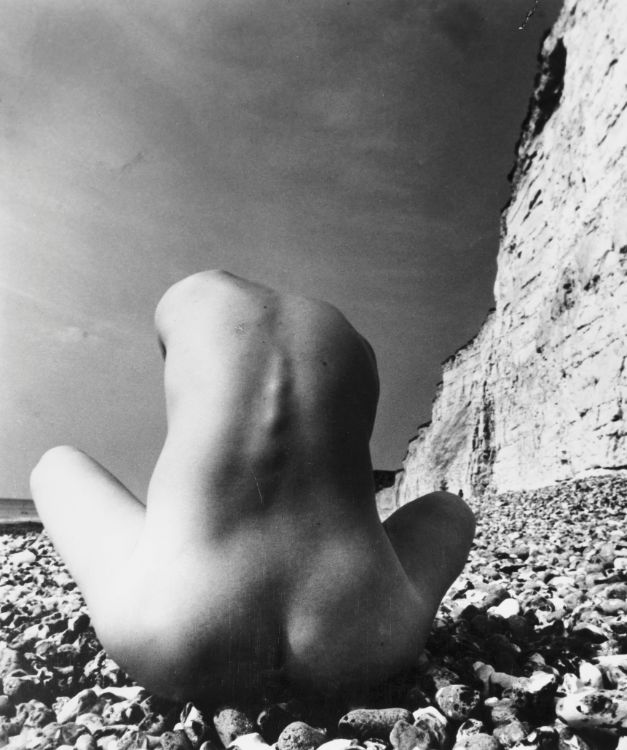
Although Bill Brandt’s long artistic career spanned social documentary work, landscapes and portraiture, shortly before he died, he stated that it was his nudes that were his greatest love and that all his other work was commercial. He had experimented with photographing nudes throughout the 1930s and early 1940s, but his approach was transformed when he found a Kodak Wide Angle camera in a second-hand shop in Covent Garden in 1944. The camera had a fixed focus and could take a panorama of a room with a single exposure. Used by the New York Police Department during the 1930s, this camera allowed Brandt to create illusions of space and steep perspectives. The camera allowed him to see, he said, “like a mouse, a fish, or a fly.”
Brandt’s first beach nude was made in Étretat, France, with his second wife, Marjorie Beckett, as model whilst they were on holiday. He also took photographs of Marjorie and other models (usually friends or relatives) at Taxo d’Avall, near Perpignan; at Baie des Anges, Nice; and on the East Sussex coast. He used a Superwide Hasselblad as well as his Kodak Wide Angle lens for the beach nudes. Whereas his early nudes, taken within austere Victorian interiors, are menacing and often disturbing, using props to imply Surrealist narratives, the beach nudes show Brandt to be consumed by formal composition. Perspective of Nudes, published in 1961, included 90 images taken over the course of a decade. Few of the nudes from the 1940s were used.
Brandt’s later nudes betray a deep understanding of American formalism, particularly that of Edward Weston. They, too, retain a clear debt to French Surrealism and Man Ray, with whom Brandt studied briefly in Paris. In these later nudes, Brandt continued to pursue the uncanny, discombobulating body parts and brings the smooth textures of the flesh into sharp relief with the jagged cliffs of the background. This image is perhaps Brandt’s best known beach nude. It shows a pear-shaped back, with wide hips and projecting thighs in the foreground slimming down to delicate shoulders, without any trace of neck or head. Brandt reshapes reality, isolating the surface of the smooth-skinned back, and contrasts it against the rough pebbles and jagged cliffs. The distorted scale and high contrast heighten this uncanny effect, and turn the familiar into the unknown